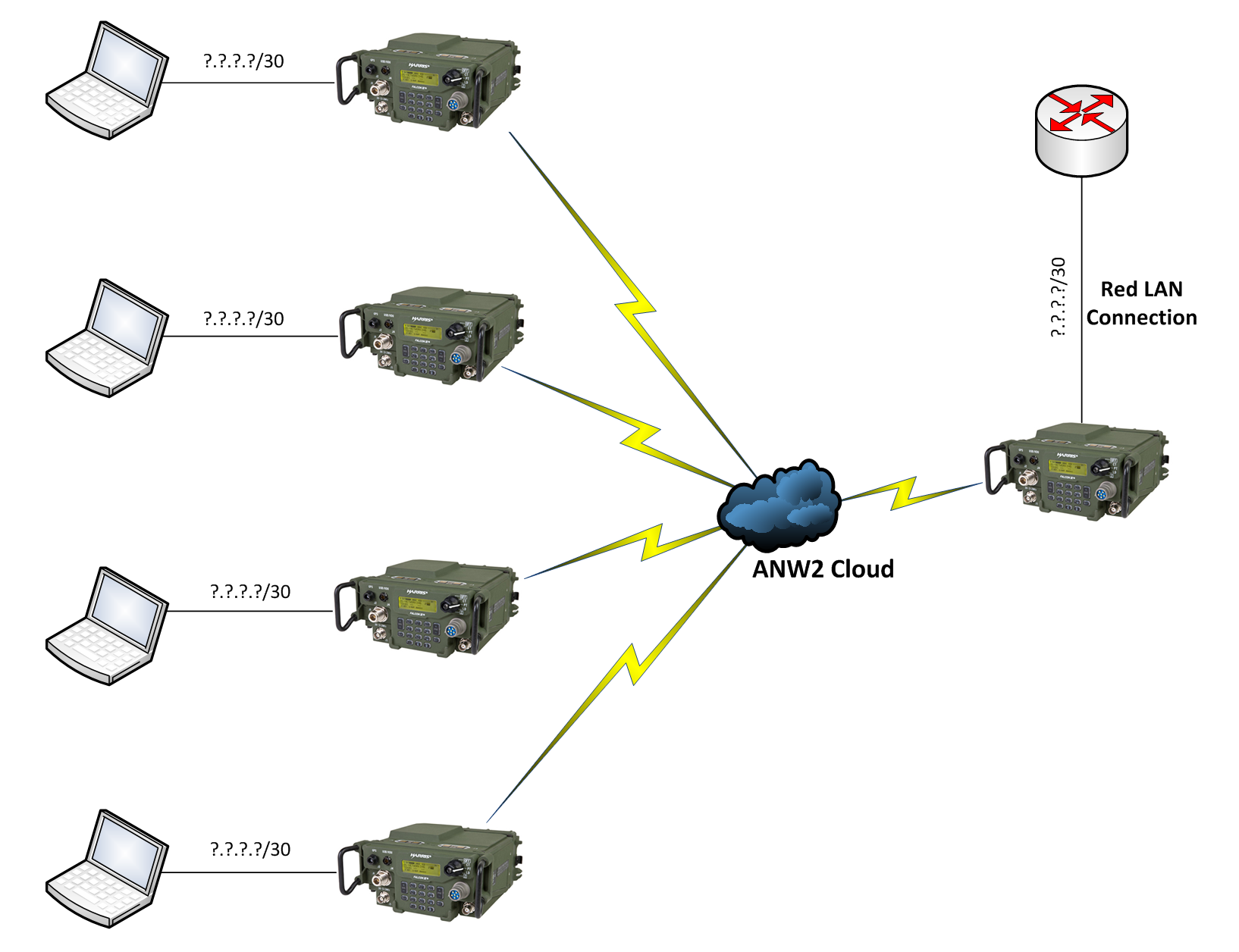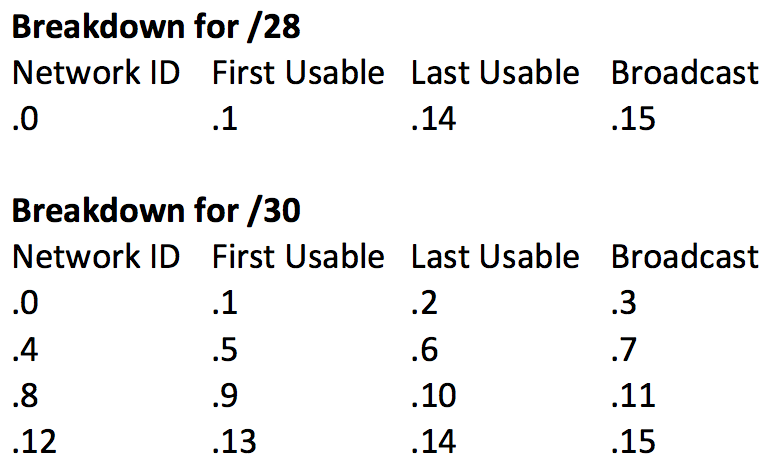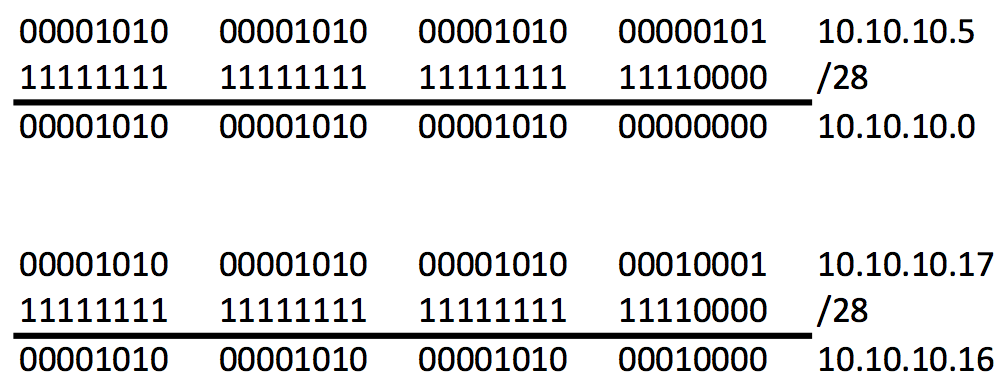Designing ANW2 Networks
I always enjoy seeing how other Marines solve comm problems. Especially when they are problems I have seen before. You can always learn a lot from how others approach similar problems. I was talking to a SSgt recently, and it made me change the way I designed ANW2 networks. I’ve always gathered the required number of stations, subtracted one for the RedLAN (edge) radio, and made it the closest power of two (2,4,8,16,32, etc.). Most of my employments have been small, proof of concept style employments, which have normally looked something like this:
- Two stations, one RedLAN radio = three subnets
- Closest power of two = four subnets
- # of assets off of each radio = 1 (laptop)
- Subnet size = /30
- Four subnets x /30 per subnet = /28 (two /30s in a /29, two /29s in a /28)
- This lead me to allocate a /28 for my ANW2 networks
If you are more of a visual learner, here is what that looks like:
The SSgt I talked to used a discontiguous block of subnets for his ANW2 network. I started the conversation off by explaining how this was going to make life more difficult for the data Marines, but the more I started thinking about it, the more I liked his idea of using discontiguous subnets (for the RedLAN radio and the other radios with clients). You need to use contiguous subnets for the actual radios with clients off of them, but why do you need to waste IP space on your RedLAN radio? The short answer is that you don’t. Save your valuable public IP space for the radios with clients off of them. Use a private /30 for your RedLAN radio, and use public /30s for your radios with laptops. This will also give you a chance to expand your number of radios with users. Now instead of having to use one of your allocations for a RedLAN, it is a plus one (in the example above, there were two radios plus one RedLAN that required four subnets, now that would only require two).
Let’s delve a bit deeper into why these subnets need to be a power of two. On the other side of this configuration, the data Marines are going to have to hop onto a router and tell the network how to reach your RedLAN radios. The goal would be to be able to explain your ANW2 network in a single network statement. This concept is known as “summarization”. It sounds like a pretty complicated concept, but it is actually pretty simple: Change the subnet mask. Instead of 192.168.1.0/30, 1.4/30, 1.8/30 and 1.12/30 you would have 192.168.1.0/28. Here is a quick chart that shows you how these are actually the same numbers:
You could program a router to either send one /28 or four /30s and it would result in the same action (your packets would still make their way to the destination), but it would not be as efficient (PLUS that is three additional chances for someone to fat-finger something). Sounds pretty easy, right? How could you go wrong? The most common problem I have come across is that people start on invalid Net IDs. An example: You could not use 10.10.10.4/30, .8/30, .12/30, and .16/30 as summarized networks for 10.10.10.4/28. But why can’t you? All that summarization does is change the subnet mask for a given network. Do you remember back to CCNA 1 when you used the ANDing process to see if two hosts were in the same network? You can do the same thing to check your work with summarization. Here is what that would look like:
Using IPs from the example above, we used the summarized /28 on two addresses and illustrated why you can’t just start a summarized network anywhere (if the summarization worked, the result would be the SAME NetID). A /28 will ALWAYS use .0, .16, .32, .48, .64, etc. as Net IDs. This goes the same for any other summarized network you choose.


